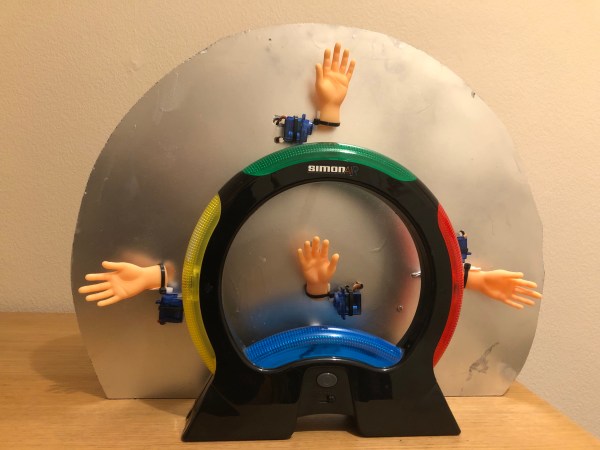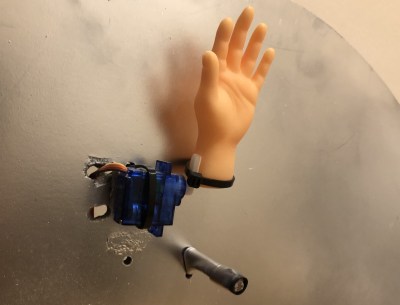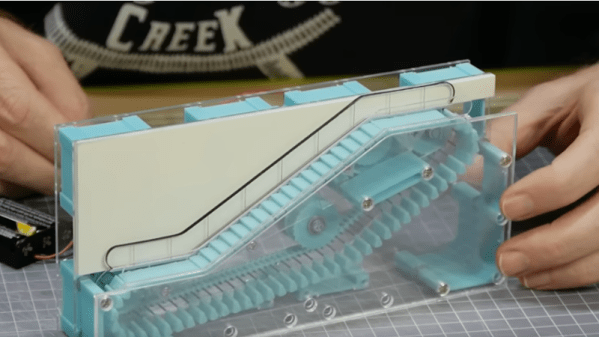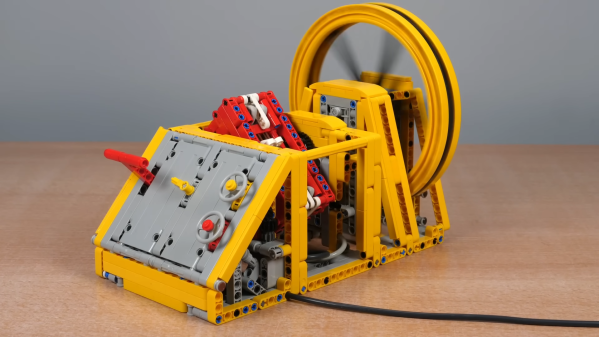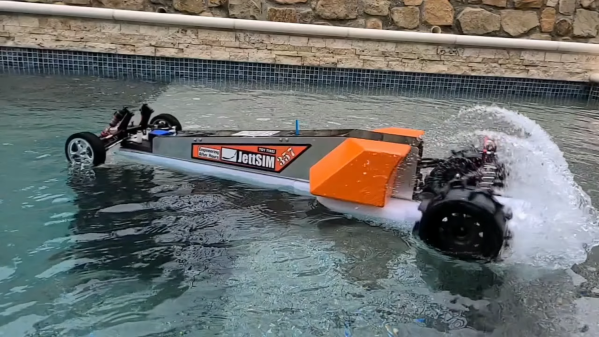Occasional pieces of furniture serve little purpose other than to fill a space and maybe display a prized ornament or two. Who hasn’t got a relative with one two many small tables or display stands overfilling the available space!
If you visit [Peter Waldraff]’s house though, those pieces of furniture may not be what they seem. His display pedestal for example hides an N gauge railway layout that rises from the depths on a system of pulleys, with the action triggered by moving the vase displayed on its top. The vase conceals a magnet, which operates a reed switch that in turn controls the winch motor.
The layout is a loosely Batman themed train chase, with concentric spirals of track forming a continuous loop on which two trains run. There’s an ingenious arrangement with a reed switch and a piece of dead track to ensure that the chasing train is always held to ensure a gap between them. The landscaping is of a set of cliffs with a model of Wayne manor at the top, and there’s even a LED-lit Batmobile. One of the locomotives is recognisably based on a character from the Thomas the Tank Engine books.
All in all we like the ingenuity of this layout, but if you like it too then we’ve got a treat for you. Sharp-eyed readers will remember that this isn’t the first such project from Peter.
Continue reading “A Concealed Model Railway Rises To The Occasion”


